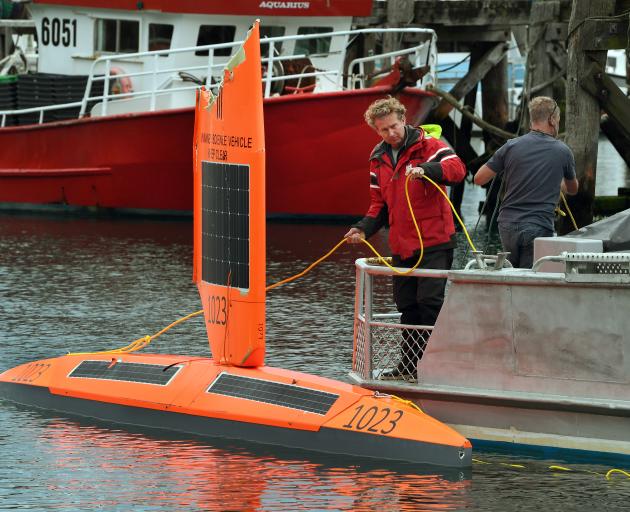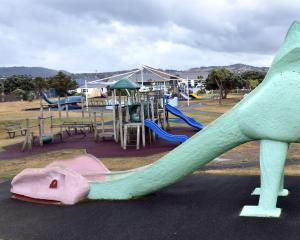
Mr Jenkins left Otago Harbour about 6am yesterday, aboard the Careys Bay catamaran Fierce Elegance, skippered by Peter Scott, to recover a damaged saildrone.
The catamaran secured it offshore, near Taiaroa Head, and towed it back to shore for repair.
"We've conquered every other ocean,'' Mr Jenkins said.
The "violent'' conditions in the Southern Ocean, including its massive "broaching'' waves, posed big challenges for the partly solar-powered, remotely controlled saildrones.
"For us, it's like going to Mars.''
The Southern Ocean's remoteness and the harsh conditions suggested "many parallels'' with the challenges of space travel, but he believed the ocean conditions were "more extreme''.

"I have no doubt we will solve the problem. It's just a matter of time.
"Obviously, oceans are driving our weather and climate, not just in New Zealand, but for the whole world.''
Another saildrone, operating in the Southern Ocean, had earlier been damaged, and several saildrones launched from Bluff recently were of a modified design, intended to be more resilient, he said.
Mr Jenkins said the recovered saildrone was one of those launched from Bluff, and it had been damaged in a storm about 160km southeast of Dunedin.
Although part of the sail had been smashed, the vehicle had been remotely steered to close to Otago Harbour to enabled it to be retrieved.
A University of Otago research team, aboard the research vessel Polaris II, retrieved a saildrone from Enderby Island, in the Auckland Islands, in August last year.
Asked if saildrones could help New Zealand glean more biological and other data from its 4,000,000sqkm exclusive economic zone, Mr Jenkins said they could prove highly valuable to New Zealand.
The Southern Ocean was a dangerous area, and saildrones could retrieve a mass of helpful data, including about fish populations, without putting lives at risk, and at a fraction of the cost of crewed vessels.
Saildrone designers could learn from the Southern Ocean, and could help generate a great deal more biological and oceanographic information about the huge maritime area under New Zealand's control.
English-born Mr Jenkins co-founded San Francisco-based Saildrone Inc in 2011, and has since been its chief executive.
He set a world land speed record for a wind-powered vehicle, clocking 202.9kmh in his car in 2009.












